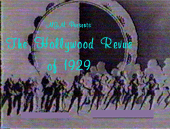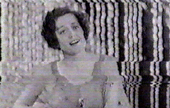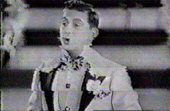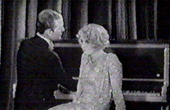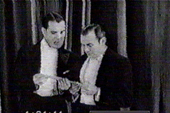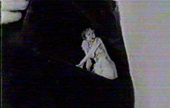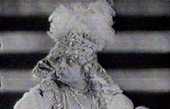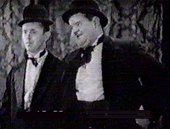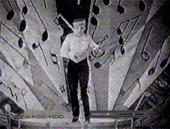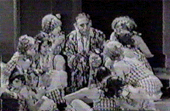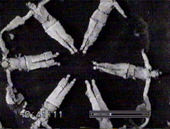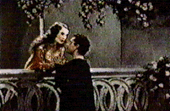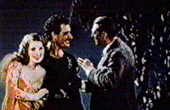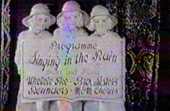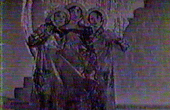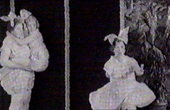The Academy Awards couldn't have
began at a more complicated time in film history. Hollywood didn't
seem to feel the impact of the economic depression that the rest of the
world would suffer at the close of the 1920's, but many within the
industry had their own troubles, as the advent of sound recording was
changing the way we saw movies.
Sound
actually became a part of motion picture industry in 1927, when The Jazz
Singer featured a musical bit by its star, Al Jolson. The
breakthrough was remarkable and theatres were quick to install the
equipment needed to run the feature. Audiences were equally
impressed, and the film was an instant hit.
The
film had such an impact that at the first years ceremony, the Academy of
Motion Picture Arts and Sciences chose to disqualify the film from
contention for Best Picture, awarding it instead with a special statue for
technical achievement.
Despite
the success of The Jazz Singer, critics wrote talking pictures off as
nothing more than a novelty, that wouldn't last more than a couple of
years.
Of course,
the exact opposite occurred, and talking pictures became a phenomenon that
was wildly popular with audiences, and that forced theatres all over the
world to invest in sound equipment fast - or face bankruptcy.
For
actors, it was an even bigger shake up. Many of the popular stars of
the day couldn't make the transition to talkes, often because their voices
failed them. Stars like Emil
Jannings, the first ever Best Actor winner,
fell victim to the trend, as his thick German accent didn't play well to
American audiences. Mary Pickford
was a huge star, playing child
like characters in silent films, but her grown up voice quickly turned
away her audience.
Studio
bosses reacted by calling on actors from Broadway, and by putting an
all-out casting call to get new stars on their roster. It was this
kind of move that introduced the world to a host of new names, including
Clark Gable, Katherine Hepburn, Charles Laughton and Bette
Davis.
In the
meantime, several well known silent performers did manage to make the
transition. MGM even put together a vehicle to introduce their
regular players to sound.
The
all-star movie, and Best Picture nominee, The Hollywood Revue of 1929
played like a flashy vaudeville show. Conrad Nagel performed hosting
duties, introducing a stable of familiar MGM contract players.
The
performers, who included Joan Crawford, Marion Davies, Laurel and Hardy,
Jack Benny, Norma Shearer, Charles King and Bessie Love, performed their
little hearts out, in what might have been considered a screen test.
MGM was obviously saying, "Look what we can do" and perhaps
quelling any doubts about their stars' ability to speak.
It
seems remarkable today that this film was actually nominated for Best
Picture. Fans of classic movies might get a kick out of seeing some of
these stars perform in small bit parts, but at the time, the fascination
was in hearing these stars speak for the very first time.
The
film has no real story line, and the only common thread throughout the
picture is discussion and song about the talkies. Bessie Love sings
"Moving pictures aren't what they used to be. These crazy sound
effects have made a wreck of me. My vocalizing is rather of weak -,
it seems to have a kind of squeak. It needs adjusting - so to
speak."
The Hollywood
Revue of 1929 highlighted one of the key features that talking pictures
had over silent films. Not only could the talkies feature dramatic
fare, but they could take entertainment a step further, bringing to the
screen music and vaudeville. While many of the stars featured were
huge movie stars, others, like Jack Benny and Charles King, also had a
following on the radio.
The
film actually created a trend in early talkies, with the vaudeville style
being used again and again while Hollywood experimented with
sound. Later, the same kind of spectacle would be translated onto
television in the form of variety specials.
